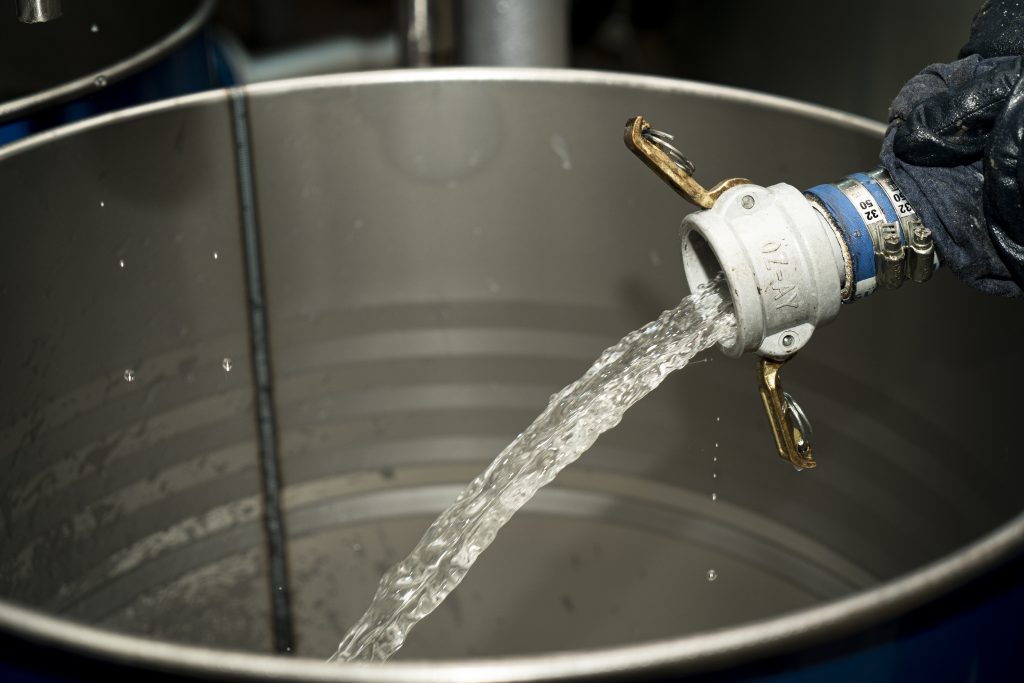
The Hidden Hero in Health and Skincare
You’ve probably seen mineral oil listed on the label of creams, ointments, or baby lotions.
It’s clear, odorless, and smooth — but not all mineral oils are the same.
Table of Contents
ToggleAmong the many types available, pharmaceutical grade mineral oil stands out as the purest and safest form.
It’s specially refined for medical, cosmetic, and food-related applications, where safety and consistency are critical.
Let’s explore how this oil is made, why it’s trusted worldwide, and how it supports industries that prioritize purity and performance.
What Is Pharmaceutical Grade Mineral Oil?
Pharmaceutical grade mineral oil is a highly refined, purified form of liquid paraffin obtained from petroleum.
Through advanced refining techniques, all impurities, aromatic hydrocarbons, and reactive substances are removed.
The result is a clear, colorless, odorless oil that is stable, non-toxic, and gentle on skin and tissues.
It’s classified as pharmaceutical grade because it meets strict standards set by international organizations such as:
-
USP (United States Pharmacopeia)
-
BP (British Pharmacopoeia)
-
EP (European Pharmacopoeia)
This means it’s safe enough for direct human contact and ingestion in controlled quantities.
How Pharmaceutical Grade Mineral Oil Is Made
Producing pharmaceutical grade mineral oil involves a multi-step purification process designed to achieve extreme purity.
Here’s how it typically happens:
-
Crude Oil Selection:
The process starts with selecting high-quality crude oil fractions rich in saturated hydrocarbons. -
Distillation:
The crude oil is separated under heat and pressure. The lighter fractions are used for fuels, while the heavier part becomes the feedstock for mineral oil. -
Hydrogenation and Refining:
The oil undergoes deep hydrogen treatment to remove sulfur, nitrogen, and unsaturated compounds. -
Filtration and Bleaching:
The refined oil is filtered through clay or activated carbon to eliminate any color, odor, or trace impurities. -
Testing and Certification:
Finally, the oil is tested for color, viscosity, flash point, and chemical stability before it’s approved as pharmaceutical grade.
This entire process ensures that the oil is chemically neutral, odorless, and safe for sensitive applications.
Physical and Chemical Properties
| Property | Typical Value |
|---|---|
| Appearance | Clear, colorless liquid |
| Odor | Odorless |
| Viscosity | 60–200 cSt at 40°C |
| Density | 0.83–0.88 g/cm³ |
| Flash Point | > 180°C |
| Purity | 99.9% hydrocarbons |
| Toxicity | Non-toxic, non-irritant |
These properties make pharmaceutical grade mineral oil ideal for medical, cosmetic, and industrial formulations that demand precision and purity.
Why Pharmaceutical Grade Matters
Not all mineral oils are safe for human contact. Lower-grade mineral oils may contain trace impurities that can irritate skin or cause chemical reactions.
That’s why pharmaceutical grade mineral oil is essential. It offers:
-
Absolute purity — free from aromatic and unsaturated hydrocarbons
-
Chemical stability — doesn’t oxidize or turn rancid
-
Biocompatibility — safe for contact with skin and mucous membranes
-
Consistency — same viscosity and texture every time
-
Regulatory approval — meets pharmacopeia standards
Simply put, pharmaceutical grade mineral oil is the gold standard when safety can’t be compromised.
Common Applications of Pharmaceutical Grade Mineral Oil
Pharmaceutical grade mineral oil has a wide range of uses because it’s clean, stable, and skin-friendly.
1. Medical and Pharmaceutical Uses
This oil is often used as:
-
A laxative to relieve constipation (taken orally under medical supervision)
-
A base for ointments and creams to protect and moisturize skin
-
A lubricant in medical equipment and surgical instruments
-
A stool softener in specific medical formulations
Because it doesn’t react with other ingredients, it’s perfect for drug manufacturing and compounding.
2. Cosmetic and Personal Care Products
In cosmetics, pharmaceutical grade mineral oil acts as:
-
A moisturizer that prevents water loss
-
A makeup remover that gently dissolves residue
-
A base ingredient in lotions, balms, and serums
-
A protective layer that locks in moisture
It’s widely used in baby oils, body lotions, cold creams, and lip care products.
Since it’s hypoallergenic and non-comedogenic, it’s suitable for all skin types — even sensitive ones.
3. Food and Packaging Industry
Food-grade versions of pharmaceutical mineral oil are used to:
-
Coat fruits and vegetables to keep them fresh
-
Lubricate food-processing machinery
-
Protect metal surfaces from rust in packaging lines
Because it’s inert and non-toxic, it’s safe in controlled food applications.
4. Industrial and Technical Uses
Although it’s called “pharmaceutical,” this type of mineral oil is also valuable in technical industries.
It’s used in:
-
Textile manufacturing as a lubricant
-
Rubber and plastic production as a softener
-
Electrical applications as a dielectric fluid
Its stability and non-reactive nature make it useful wherever precision is needed.
Benefits of Pharmaceutical Grade Mineral Oil
There are many reasons industries and consumers prefer this oil:
-
Purity: It’s among the cleanest oils available.
-
Safety: It doesn’t irritate, react, or degrade easily.
-
Versatility: Works in medicine, cosmetics, and manufacturing.
-
Long shelf life: Stays stable for years without changing quality.
-
Cost-effective: Affordable compared to synthetic alternatives.
Additionally, it’s colorless, odorless, and tasteless, which makes it adaptable for various formulations.
Quality Standards and Certifications
Pharmaceutical grade mineral oil must meet strict global regulations, including:
-
USP (U.S. Pharmacopeia)
-
BP (British Pharmacopeia)
-
EP (European Pharmacopeia)
-
FDA (U.S. Food and Drug Administration)
Every batch is tested for:
-
Purity and color
-
Viscosity and density
-
Flash point and odor
-
Absence of contaminants
This ensures the oil remains safe, pure, and consistent in every use.
Environmental and Safety Aspects
Modern production of mineral oil is designed to be safe and sustainable.
Manufacturers use hydrogen refining and recycling systems to minimize waste and emissions.
Moreover, pharmaceutical grade mineral oil is biodegradable in controlled conditions and non-flammable at room temperature.
When stored properly, it poses no health or environmental risk.
ATDM – Trusted Supplier of Pharmaceutical Grade Mineral Oil
When industries and healthcare companies need reliable pharmaceutical grade mineral oil, they turn to ATDM.
ATDM produces and exports high-purity mineral oil that meets USP, BP, and EP standards.
Their oil is widely used in pharmaceuticals, cosmetics, and food packaging, thanks to its purity, stability, and consistency.
With decades of experience in the petroleum refining sector, ATDM has earned a global reputation for delivering safe, certified, and top-quality mineral oils.
Every batch undergoes rigorous testing, ensuring that clients receive the finest pharmaceutical grade mineral oil available.
Final Thoughts
Pharmaceutical grade mineral oil is far more than just a refined liquid — it’s a foundation of safety, quality, and trust.
From skincare to surgery, it supports countless applications that touch our daily lives.
And with reliable suppliers like ATDM, industries worldwide can continue to depend on pure, tested, and approved mineral oil for every essential need.

